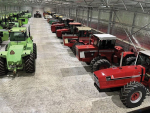The latest issue of Statistics New Zealand's Price Index News has just been released, charting the prices and volumes of sheepmeat and wool dating back to the 1920s.
The report shows wooI prices spiked in 1951 when the US military ordered large quantities of wool products during the winter campaign of the Korean War. This led to a wool boom, with prices for wool exports rising 130 percent between 1950 and 1951. However, within a year prices had fallen (down 53%) to similar levels seen in 1950.
When wool prices peaked in 1989, the total export value of New Zealand's wool was $1.8b. By 2011 this had fallen 60%, to $720 million. In contrast, lamb, hogget, and mutton exports rose 189% over the same period, up from $1b in 1989 to $2.9b in 2011.
Also in Price Index News is "Red, ripe and really versatile: tracking tomato prices in the CPI", which investigates the price and volume of tomatoes in New Zealand, including last year's price surge to $13.25/kg. New Zealanders spent $100m on fresh tomatoes in the year for June 2010.
Price Index News is available at http://www.stats.govt.nz/tools_and_services/services/newsletters/price-index-news/jan-12.aspx









